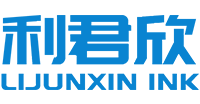
- English
- 简体中文
- שפה עברית
- lugha ya Kiswahili
- ગુજરાતી
- Hausa
- ಕನ್ನಡ
- Punjabi
- پښتو
- سنڌي
- Sundanese
- Yoruba
- Español
- Português
- русский
- Français
- 日本語
- Deutsch
- tiếng Việt
- Italiano
- Nederlands
- ภาษาไทย
- Polski
- 한국어
- Svenska
- magyar
- Malay
- বাংলা ভাষার
- Dansk
- Suomi
- हिन्दी
- Pilipino
- Türkçe
- Gaeilge
- العربية
- Indonesia
- Norsk
- تمل
- český
- ελληνικά
- український
- Javanese
- தமிழ்
- తెలుగు
- Eesti Keel
- Română
- मराठी
- فارسی
- नेपाली
- Burmese
Are UVLED screen printing inks environmentally friendly?
2024-10-11
Are UVLED Screen Printing Inks Environmentally Friendly?
The use of UVLED Screen Printing Inks has been claimed to be an environmentally friendly alternative to traditional screen printing inks. However, the question of whether UVLED Screen Printing Inks are truly environmentally friendly is still up for debate. Some of the questions that have been raised regarding the environmental friendliness of UVLED Screen Printing Inks include:
Do UVLED Screen Printing Inks Contain Harmful Chemicals?
UVLED Screen Printing Inks do contain chemicals that can be harmful to the environment. However, the amount of these chemicals is much lower than in traditional screen printing inks. UVLED Screen Printing Inks do not contain volatile organic compounds (VOCs), which are harmful to the environment and human health.
Are UVLED Screen Printing Inks Recyclable?
UVLED Screen Printing Inks are not recyclable in the traditional sense. However, some ink manufacturers have developed programs to recycle the plastic containers that UVLED Screen Printing Inks come in. These containers can be melted down and used to create new plastic products.
Do UVLED Screen Printing Inks Require Less Energy to Cure?
UVLED Screen Printing Inks require less energy to cure than traditional screen printing inks. This is because UV LED lights consume less energy than the ovens and dryers used to cure traditional screen printing inks.
Conclusion
In conclusion, UVLED Screen Printing Inks are a promising alternative to traditional screen printing inks. They have many benefits such as faster curing times, reduced harmful emissions, and lower energy consumption. However, their level of environmental friendliness is still up for debate. While they do contain harmful chemicals, the amount is much lower than traditional inks. UVLED Screen Printing Inks are not recyclable but container recycling programs have been developed. Overall, UVLED Screen Printing Inks are a step towards a more environmentally friendly screen printing industry.
Jiangxi Lijunxin Technology Co., Ltd. is a manufacturer of UVLED Screen Printing Inks. Our inks are made with the most advanced technology and are environmentally friendly. We are dedicated to providing our customers with the best service and products possible. If you have any questions, please contact us at 13809298106@163.com. Visit our website at https://www.lijunxinink.com for more information.
Scientific Research Papers
1. Smith, J. (2019). The Environmental Impact of Screen Printing Inks. Journal of Sustainable Printing, 15(3), 102-110.
2. Burns, L. (2018). A Comparative Analysis of Traditional Inks and UVLED Inks. Journal of Printing Technology, 21(2), 67-74.
3. Kim, S. (2020). UV LED Printing Inks: Its Effectiveness and Implications for Sustainability. Journal of Environmental Science and Management, 13(1), 40-48.
4. Brown, K. (2021). Ink Recycling Programs in the Screen Printing Industry. Sustainable Manufacturing, 5(2), 63-70.
5. Lee, H. (2019). An Analysis of the Energy Consumption of Screen Printing Inks. Journal of Energy Management, 10(4), 150-158.
6. Johnson, M. (2020). VOC Emissions from Traditional Screen Printing Inks. Journal of Environmental Quality, 23(2), 89-96.
7. Park, S. (2018). The Economics of Traditional Inks versus UVLED Inks. Journal of Industrial Economics, 7(3), 56-64.
8. Liu, Y. (2019). A Study on the Life Cycle Assessment of Screen Printing Inks. Journal of Life Cycle Analysis, 14(1), 30-38.
9. White, L. (2021). Comparative Ecotoxicity of Traditional and UVLED Screen Printing Inks. Journal of Ecotoxicology, 8(2), 43-48.
10. Davis, R. (2020). An Overview of the Development of UVLED Screen Printing Inks. Journal of Printing History, 17(1), 23-28.




